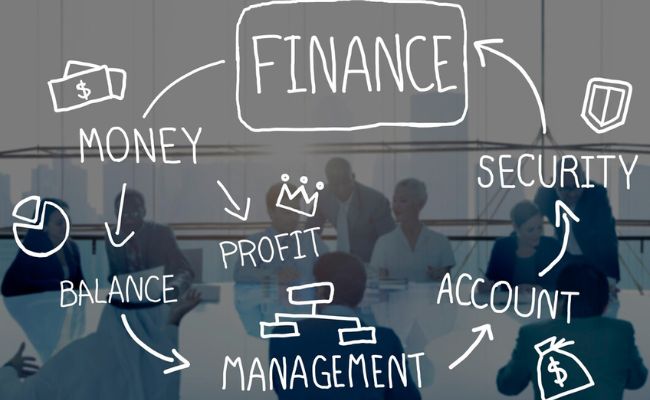BharatGen: Empowering India with Multilingual AI for the Next Generation

Introduction:
BharatGen project is a transformative step by the Indian government aimed at developing a multimodal Large Language Model (LLM) capable of generating high-quality text and multimodal content, primarily in Indian languages. This ambitious project, launched by the Department of Science and Technology (DST) under the Ministry of Science & Technology, marks India’s first government-supported effort in the realm of generative AI for multilingual and multimodal applications. The project is part of India’s broader strategy to position itself as a leader in AI innovation, ensuring the development of technologies that are inclusive, accessible, and capable of serving the diverse needs of its population. BharatGen is set to significantly impact sectors like education, research, and government services, potentially empowering millions by providing AI-based solutions that cater to India’s diverse linguistic and cultural landscape.

Vision:
The BharatGen initiative was launched under the National Mission on Interdisciplinary Cyber-Physical Systems (NM-ICPS) by the Department of Science & Technology (DST). This project represents India’s commitment to developing its own AI solutions, as the nation strives to break free fro
m its dependence on foreign technologies. BharatGen is designed to address the digital and knowledge divide that exists across India’s various linguistic and cultural segments. By leveraging AI, BharatGen will facilitate the creation of tools and platforms that make technological benefits accessible to everyone, regardless of language, region, or socioeconomic status.
The overarching goal of the BharatGen project is to develop open-source AI models that focus on generating, understanding, and processing content in Indian languages. These models will support not just traditional text-based data but also multimodal formats like images and videos. By making AI more inclusive and accessible, BharatGen will empower the people of India to harness the power of AI in their everyday lives, enhancing both personal and professional productivity.

Key Features:
- Multilingual and Multimodal Capabilities: BharatGen will be able to generate content in multiple Indian languages, catering to the linguistic diversity of the nation. Its multimodal design will allow it to generate text, images, and even videos, making it suitable for a wide range of applications across various industries.
- Focus on Indian Languages: One of BharatGen’s standout features is its focus on Indian languages. India is home to more than 22 official languages, with hundreds of dialects spoken across the country. BharatGen aims to bridge the gap by providing AI models capable of generating content in these diverse languages.
- Open-Source Ecosystem: BharatGen is designed to be an open-source platform, enabling collaboration among government bodies, educational institutions, private enterprises, and research organizations. This open-source nature will foster innovation, ensuring that the AI models can be continually improved upon by a wide community of developers.
- Local Relevance: BharatGen will also integrate regional contexts and cultural nuances, allowing it to serve the specific needs of local communities better than global AI systems that may not fully understand the socio-cultural environment of India.
Advantages:
1. Linguistic Inclusivity: One of the most significant advantages of BharatGen is its ability to process and generate content in multiple Indian languages. This inclusivity can help bridge the digital divide, making AI tools and technologies accessible to speakers of regional languages, who otherwise may have struggled to access such resources.
For example, farmers in rural areas who primarily speak local languages like Marathi, Tamil, or Bengali will be able to interact with AI-powered systems in their native language. This could significantly improve access to government schemes, healthcare information, and agricultural advice.
2. Enhanced Communication: BharatGen’s ability to generate multimodal content — not just text, but also images, videos, and audio — makes it versatile for different communication needs. Whether it’s generating a video to explain a government scheme in a local language, creating educational content for diverse audiences, or producing multimedia news content in multiple languages, the potential for this multimodal capability is vast.
3. Empowering Local Economies: By enabling content creation in regional languages, BharatGen can stimulate local economies, particularly in areas like digital media, e-learning, and content creation. For example, educational institutions can create more inclusive and region-specific e-learning modules, while content creators can use AI to generate regionally relevant content, leading to more equitable digital access.
4. Fostering Innovation in Education and Healthcare: BharatGen could revolutionize education by enabling AI-powered tutoring systems in Indian languages, allowing students to access learning materials in their native tongue. In healthcare, the system could help create region-specific health content and even generate AI-assisted diagnostics in languages accessible to rural populations, bridging the knowledge gap between urban and rural healthcare systems.
5. Support for Government and Public Services: The Indian government can utilize BharatGen to improve the efficiency of public service delivery. AI-powered chatbots, for instance, can assist citizens in multiple languages, providing information on government policies, health services, and more. This would ensure that government services are more accessible, especially in rural or linguistically diverse regions.
Challenges / Drawbacks:
While BharatGen presents an exciting opportunity, there are several challenges that must be addressed for it to reach its full potential.
1. Data Privacy Concerns: As BharatGen collects and processes vast amounts of data, there will inevitably be concerns about the privacy and security of sensitive personal information. It will be essential to implement robust data protection frameworks to ensure that users’ data is handled securely and ethically, especially considering the digital literacy levels in rural India.
2. Digital Literacy and Infrastructure: BharatGen aims to serve the entire country, but the digital literacy gap in rural and underserved areas remains a challenge. For instance, while the AI may generate content in local languages, many people may still lack the skills to interact with these technologies effectively. Additionally, the need for robust digital infrastructure, such as reliable internet access, is crucial for the widespread adoption of such AI technologies.
3. Scalability and Sustainability: Scaling BharatGen to cover a multitude of languages, contexts, and domains presents significant challenges. The AI must be continuously updated with fresh data to remain relevant and accurate, which requires substantial investment and resources. Ensuring the long-term sustainability of the project will be critical to its success.
4. Ethical Considerations and Bias: AI systems, even with the best intentions, can perpetuate biases if they are not trained and monitored properly. There is a risk that BharatGen’s AI could inherit biases from the data it’s trained on, leading to unfair or skewed results. Therefore, a strong focus on ethical AI practices, including transparency and accountability, will be necessary to prevent harm.
Impact of BharatGen in the Near Future:
The BharatGen initiative has the potential to drastically impact several sectors in the near future. Some of its key impacts include:
1. Education Sector: Enhancing Accessibility and Inclusivity
Example: AI-powered Learning Platforms in Local Languages
In India, the education system faces significant challenges due to linguistic diversity. A large percentage of students in rural areas are not proficient in English, which is often the primary medium of instruction. BharatGen’s multilingual and multimodal capabilities can be used to create educational platforms that cater to various Indian languages, bridging this gap.
Interactive AI Tutors: BharatGen can power AI-based tutoring platforms in regional languages. Imagine a student in a rural village in Tamil Nadu accessing an AI tutor in Tamil to learn mathematics, history, or science. The tutor could provide explanations in their native language, offer quizzes, and even generate interactive content like diagrams and videos to help students better understand complex concepts.
Localized Content Creation: Educational content such as textbooks, e-learning modules, and videos can be auto-translated or generated by BharatGen into regional languages. A history textbook in English, for instance, could be transformed into Kannada, Marathi, or any other regional language. This would ensure that students in different parts of the country have access to relevant and understandable learning material.
Personalized Learning: BharatGen’s ability to understand user queries and adapt its responses means it can offer personalized learning experiences. A student struggling with a particular subject can get targeted help in their own language, improving learning outcomes significantly.
Long-Term Impact: This approach can help students from non-English backgrounds access the same quality of education as those from more urban, English-speaking regions. Over time, it will contribute to reduced educational inequality across India.
2. Healthcare: Facilitating Accessible Health Information
Example: Multilingual Health Assistance and Diagnostics
The healthcare sector in India, especially in rural and semi-urban regions, often faces barriers due to language differences between patients and healthcare providers. BharatGen’s AI models can offer a solution to this problem, making healthcare more inclusive and accessible.
AI-Powered Health Chatbots: BharatGen can be used to develop multilingual health chatbots that provide preliminary medical advice, answer health-related questions, or guide patients in understanding their symptoms. These chatbots could interact with patients in various languages (e.g., Hindi, Bengali, Telugu) and offer advice based on symptom input. For example, a person suffering from a fever can chat with an AI in their local language, get guidance on when to see a doctor, and learn about common remedies.
Medical Content in Local Languages: Public health campaigns often face difficulties in reaching rural populations due to language barriers. BharatGen can generate multimedia content (videos, audio, text) to inform people about critical issues like vaccination, hygiene, and nutrition, all in local languages. For instance, a health advisory on the benefits of COVID-19 vaccination can be tailored and shared in Assamese or Odia, ensuring that more people understand and trust the message.
Telemedicine and Diagnostics: AI-powered diagnostic systems can be designed to analyze symptoms provided by patients in their local language and suggest possible conditions or tests. This would significantly help areas with few medical professionals, allowing for more efficient telemedicine consultations.
Long-Term Impact: By bridging the language gap in healthcare, BharatGen could enhance the reach and effectiveness of public health campaigns and medical services. Over time, this would lead to improved health outcomes, particularly in rural and underserved areas.
3. Government Services: Improving Access to Public Welfare
Example: AI-Powered Government Service Assistants
India’s vast population and diverse languages often pose a challenge for accessing government services. BharatGen can help streamline the delivery of these services, ensuring that all citizens, regardless of their language or location, can interact with government portals and receive the assistance they need.
Multilingual Government Portals: BharatGen can make government websites, portals, and forms more accessible by generating content in regional languages. For instance, a farmer in Punjab trying to apply for a government subsidy related to agriculture can do so in Punjabi, without struggling with Hindi or English. This would not only make processes more inclusive but also reduce errors and confusion when citizens attempt to navigate these systems.
Virtual Government Assistants: AI-driven virtual assistants powered by BharatGen can provide 24/7 support to citizens. A person applying for a ration card, pension, or any other government service can interact with a chatbot in their local language. The assistant could help fill out forms, explain documentation requirements, and even track application status, all while supporting multiple Indian languages.
Real-time Translation: BharatGen can facilitate real-time translation services for government workers and citizens, enabling seamless communication even when parties speak different languages. A government official in Tamil Nadu can communicate with a resident from Uttar Pradesh in their respective languages, with AI translating the conversation instantly.
Long-Term Impact: BharatGen could empower millions of citizens to access government services more easily, reducing the bureaucratic barriers that often hinder effective public service delivery. This could lead to improved trust in government processes and greater civic engagement.
Conclusion
BharatGen is more than just a technological project — it is a transformative initiative with the potential to reshape India’s AI landscape. By focusing on multilingual, multimodal AI solutions, BharatGen is positioning itself to bridge the digital divide and promote inclusivity in the country’s technological growth. While the project faces challenges, particularly in data privacy, infrastructure, and digital literacy, its potential to revolutionize education, government services, and content creation cannot be overstated.
In the near future, BharatGen’s innovations could also serve as a blueprint for other countries with diverse linguistic populations, fostering global collaborations and setting new standards in multilingual AI development. The long-term impact of BharatGen is not just limited to technological advancements but also to the profound social changes it could bring about, empowering millions and contributing to a more equitable digital world.
Authored By:
Sushil Maithani
Union Bank of India
Faculty ZLC Hyderabad

